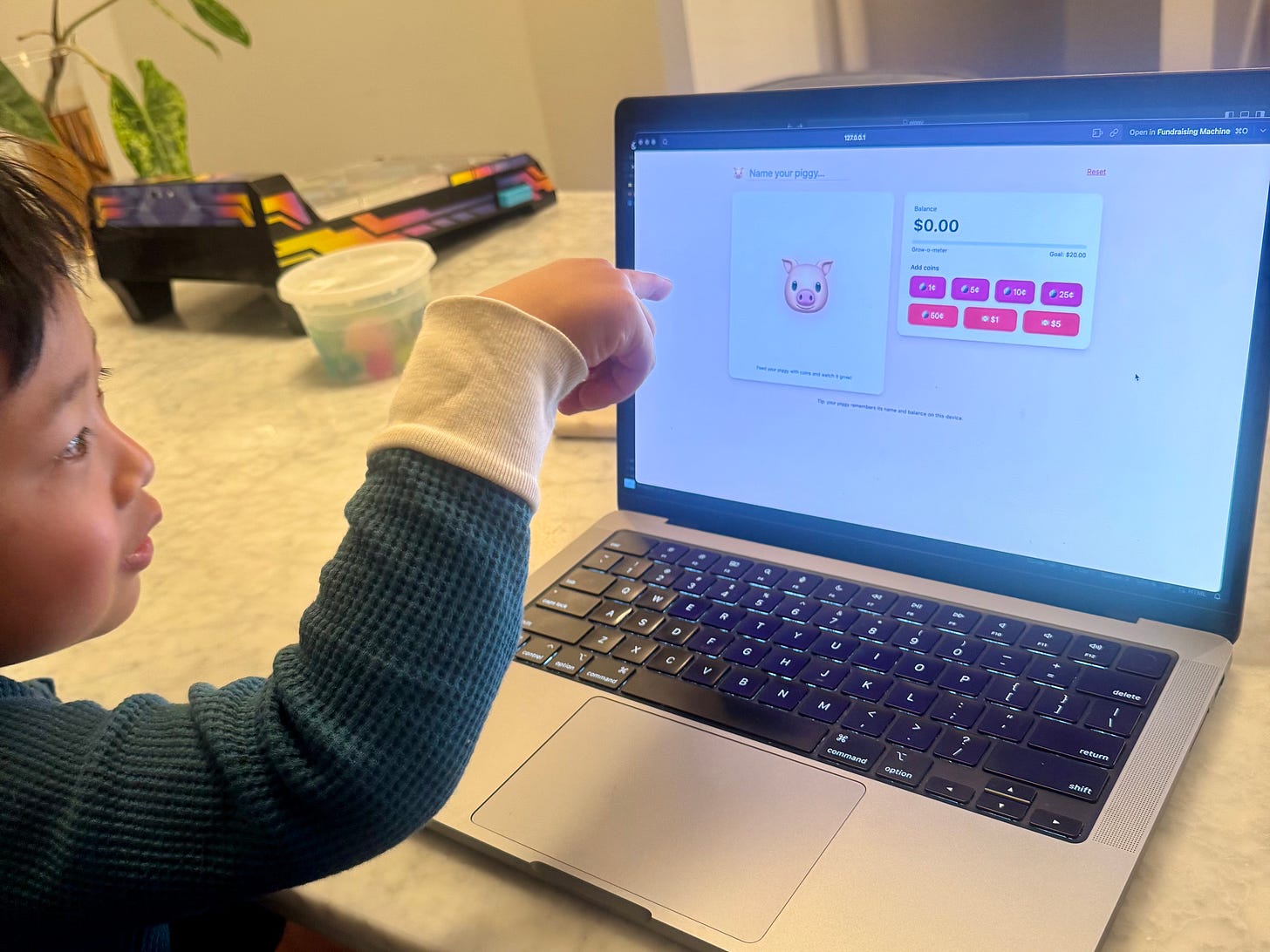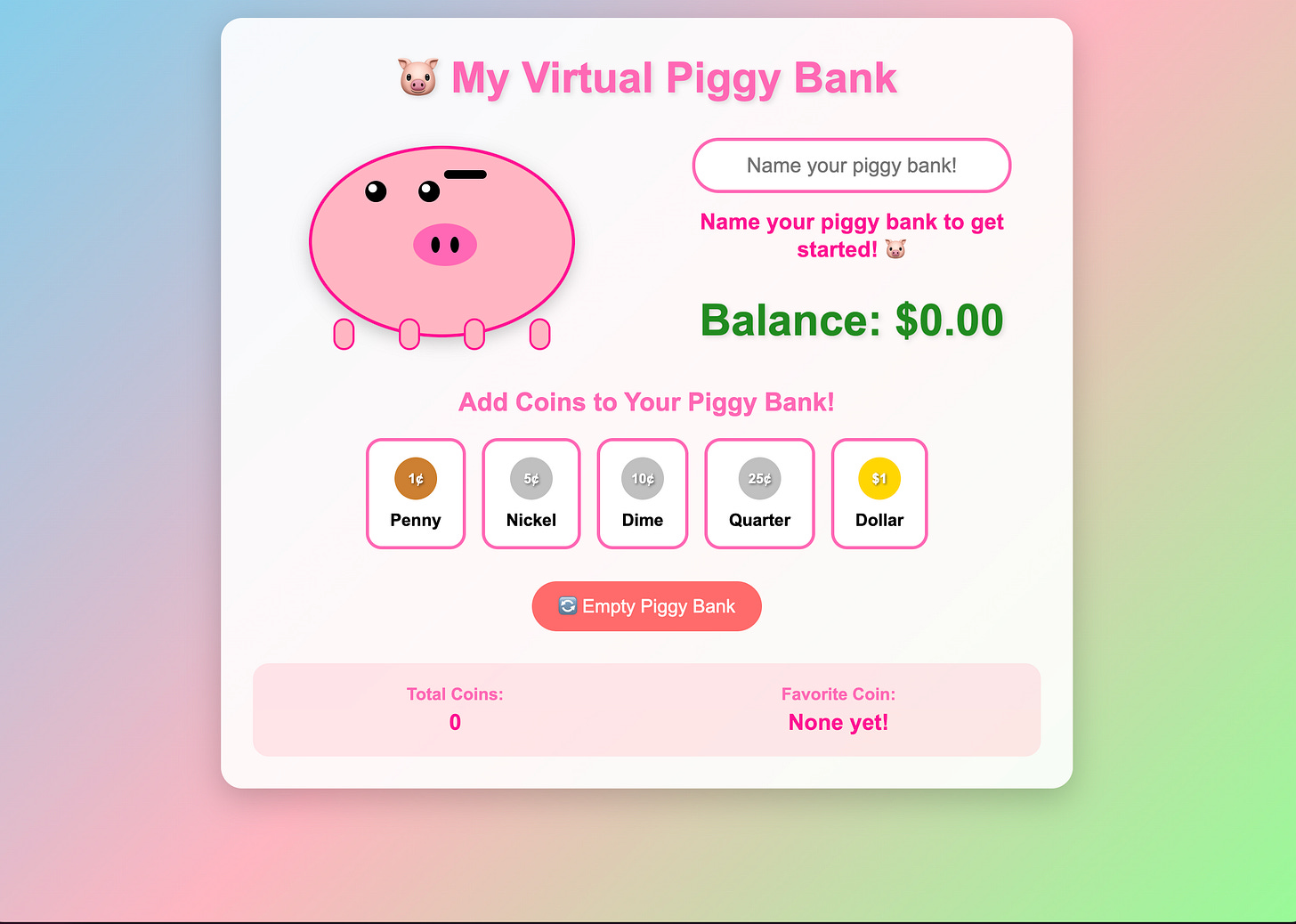Product Patterns 01: One-Shot Apps
What I'd Build: GPT-5’s Front-End Glow-Up and the Era of One-Shot Apps
This is the first in a new maker series around new product patterns in AI.
My nearly-5 year old can’t quite read - but he can vibe code. In ChatGPT’s conversation mode, we wrote a short spec for a “piggy bank” web app.
Minutes later, using Cursor and GPT-5, we had the first MVP live.
I wrote last Friday that GPT-5 is less a research leap and more the productization of the model.
The biggest changes are on the user and developer experience side, like
One unified model. No more picking between GPT-4o, o3, o4-mini, 4.1, 4.5. The system routes between models under the hood.
Better design sense. Especially in front-end code. Layouts feel more aesthetic. We might finally be jumping from “ugly but functional” MVPs.
API developers get two new dials: verbosity lets you set length of answers without rewriting prompts and reasoning_effort lets you easily flip between “think fast” and “think deep”.
For years, OpenAI was never seen as the model “with taste”.
That changes here.
We can see GPT-5’s front-end leap in action in the piggy bank build: I used the same spec, with one-shot generation, side-by-side with Claude.
GPT-5 produced a UI that instantly delighted. My kid and I started iterating on the UX, making the piggy oink with every coin deposit. Claude’s worked, but looks very much like a work-in-progress.
Why this matters:
When models can reliably produce clean, on-brand front-ends in one shot, entire categories of micro-apps and dashboards become viable as on-demand products:
A custom dashboard for a single investor meeting.
An internal tool spun up overnight for a product sprint.
An interactive event app built the week before the conference.
That’s the One-Shot App pattern, where the idea, spec, and usable product live in the same conversation.
This is the first in a new maker series around new product patterns in AI. I’d love feedback!





